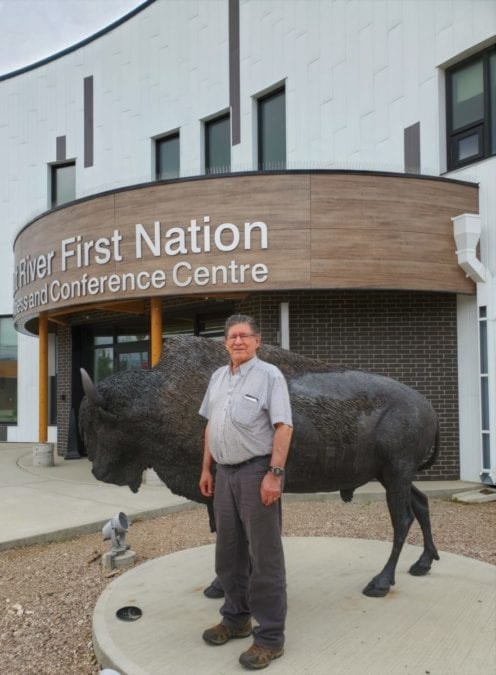Salt River First Nation said Monday the federal government has committed near $17 million to its long-planned subdivision project.
The 39-home development will increase the size of the reserve, according to a news release.
The funding will go towards the construction of the water and sewer infrastructure required to serve members and businesses. The development will take place within the Fort Smith municipal boundaries.
“It takes a lot of work and a collaborative effort to develop a project like this and secure the funding for it,” SRFN chief David Poitras said. “Salt River First Nation has had a great team working towards this day for many years. I thank them all.”
Poitras also thanked Dene Nation national chief Norman Yakeleya, Fort Smith Mayor Lynn Napier, NWT Premier Caroline Cochrane and MP Michael McLeod, who said in his own press release that he’s “thrilled” with the outcome.
“I have been working with Chief David Poitras on this submission for many months,” he said. “I believe this project presents a significant opportunity for Salt River First Nation to provide much needed services to its members.”
The project will take two years to complete, creating $22.9 million in economic output including around $6 million in wages for the 77 jobs it will support “in the NWT alone,” according to SRFN.
Once the infrastructure is in place, SRFN expects the subdivision to attract about $20 million in investment and create about $23.6 million in additional economic activity, including another 42 jobs during the home construction period.
A treaty settlement agreement between Canada and the SRFN signed in 2002 based on their 1899 treaty provided for 166 square miles of primarily undeveloped lands at 16 sites in and around Fort Smith to be transferred to SRFN. The agreement “anticipated” that once the reserves were proclaimed, financial support would flow from the federal government in order to develop those plots.
“Eighteen years later, we are all grateful that our First Nation is now able to move forward with this project that will benefit our members and the larger community,” SRFN chief negotiator Ken Laviolette said in the SRFN announcement.
